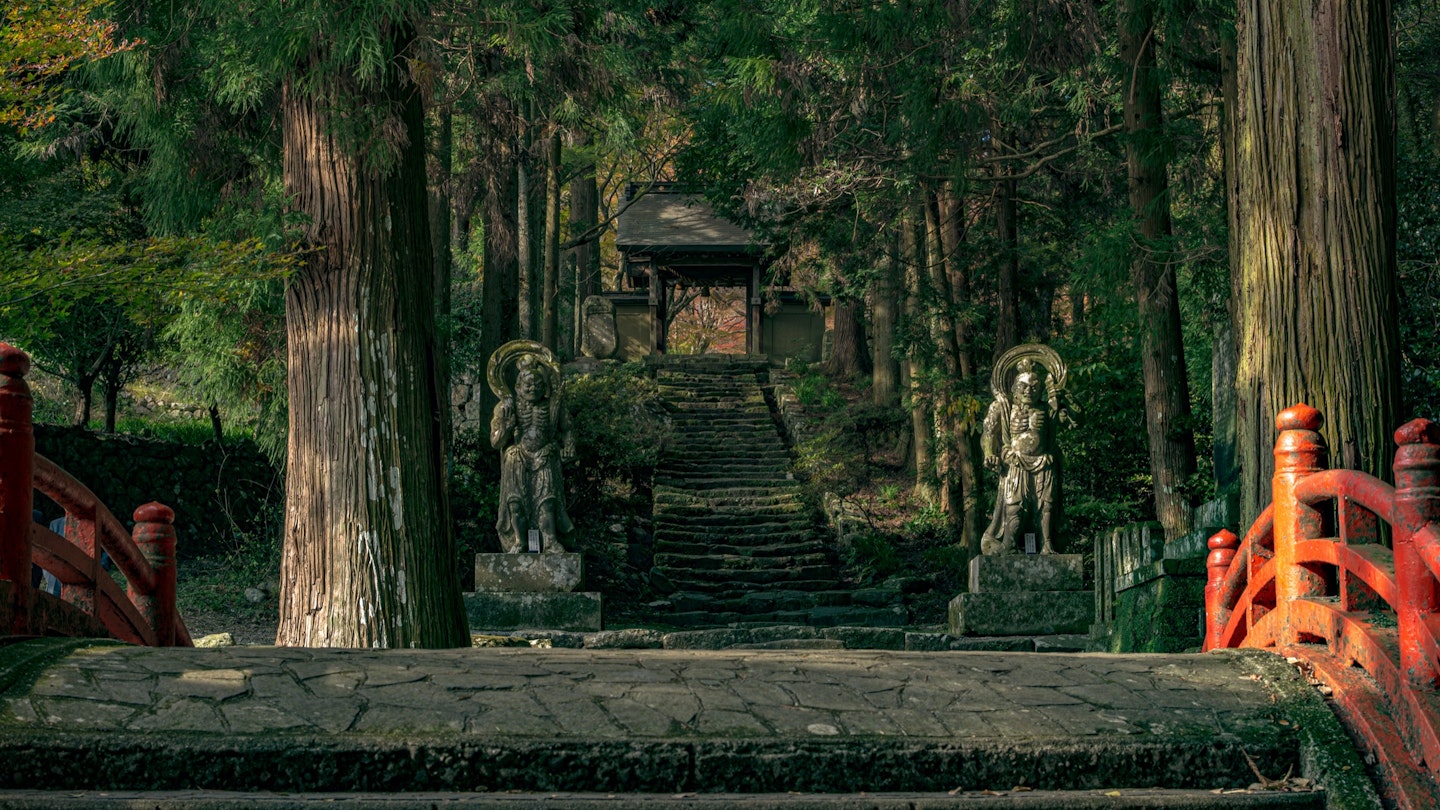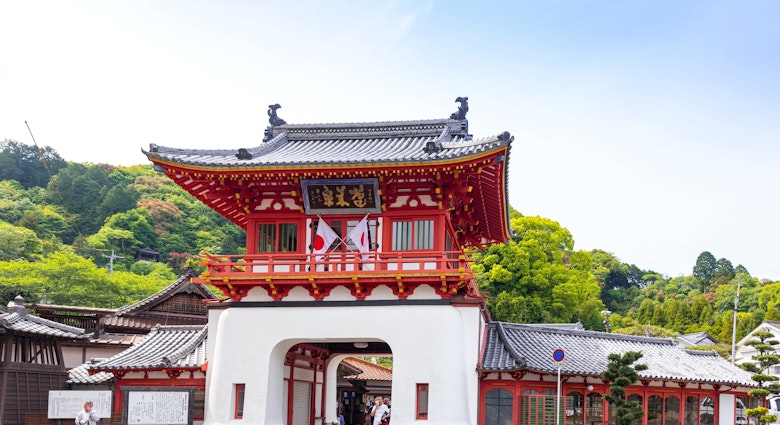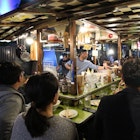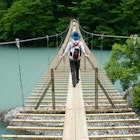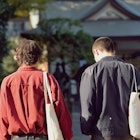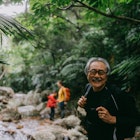Japanese history and legend were made in Kyushu, the country’s southern- and westernmost of its four main islands. Nicknamed ‘Onsen Island Kyushu,’ it’s here Shintō’s sun goddess, kabuki theater, mythical emperors, wealthy trading ports, cloistered foreigners, samurai rebels and one of the earth’s greatest wartime tragedies all loom large.
To take a deep dive into this fascinating region’s culture and history you’ll want to drive, as many places are hard to reach by transit. From the popular tourist destination of Oita Prefecture (with flights arriving from Tokyo and Osaka among other domestic locations), head west. This 8-day itinerary will send you on a counterclockwise circuit of Kyushu, getting off the most well-trodden touristed paths to see our favorite examples of the island’s historic towns, temples, churches and castles, before culminating back in Oita at the irresistible and world-famous Beppu hot springs.

Day 1
Kitsuki, Oita Prefecture
In certain places in Kitsuki’s castle town, you could be forgiven for believing you had slipped through a wormhole to a different time. Reminders of ancient days are everywhere: a traditional gate called Hanko-no-mon, built during the Edo period (1603-1868), guards the entrance to a local elementary school and has seen many children pass through since it was built.
This town, even with its beautiful patina, is a living town, but a sense of continuity with the past is palpable. For instance, Suya-no-saka (vinegar slope), with a stone-lined walkway going up a steep hill, is a popular spot for photos. The house at the bottom of the slope used to belong to a wealthy vinegar merchant – thus the name. But as this is a living town, the owner of the house now sells miso paste.
The hill itself has featured heavily in samurai dramas over the centuries. In fact, Kitsuki is often referred to as an outstanding example of a Japanese “sandwich-shaped” castle town: The northern and southern plateaus – where high-ranking samurai once lived – face each other, with a merchant street sandwiched between them below.
Get there: Kitsuki is 38 minutes from Beppu by car via Route 10
Futago-ji Temple and the Kunisaki Peninsula
The temple of Futago-ji, in the middle of the Kunisaki Peninsula, was founded in 718 and dedicated to Fudō-Myō-o, the fire-enshrouded, sword-wielding deity.
Today there’s a lovely climb to the shrine, which is built into the face of a cliff. Walk beyond a set of impressive Nio Guardian statues and some Buddhist temple buildings, then pass under a Shinto torii gate – The presence of a Shinto gateway at a Buddhist temple indicates the amalgamation of the two religions over the centuries. From there, you’ll climb some moss-covered, uneven stone steps to the shrine.
The shrine itself is unusual. The cave behind it has ‘miraculous’ spring water, said to prevent aging. Bring a bottle to save some for family and friends. In addition to this peaceful and sacred spot, there are plenty of subtemples to explore around the mountain’s forested gorges, and the wider peninsula features some of the most undisturbed spiritual places in the nation.
Get there: Futago-ji Temple is 38 minutes from Kitsuki by car via Routes 49 and 31

Days 2-3
Arita and the pottery towns, Saga Prefecture
Moving west through Fukuoka Prefecture, the fastest-growing startup hub in Japan, the next prefecture is Saga. There, the towns of Arita, Imari and Karatsu established valuable trade links with the Dutch East India Company in the 17th century, when internal strife in China made it nearly impossible to acquire porcelain there. In Arita in particular the pottery was so exquisite, enthusiasm from Dutch royalty and wealthy aristocrats came to be known as ‘porcelain sickness.’ The artwork was highly decorated in the Chinese style, often with squares of blue, red, green or gold.
The city’s porcelain mastery continues today, with many shops selling the precious craftsmanship the region is known for. One of them, Gen’emon Kiln, which is open for tours, uses only traditional methods to produce hand-made porcelain pieces.
Almost everywhere you look, porcelain has an important role. Even the torii gate of Arita’s Tozan Shrine is built from Arita porcelain instead of the more common stone. Galleries line the Yakimono Sanpo-michi (Pottery Promenade) from the station to the Kyushu Ceramic Museum, so there’s no guarantee your own case of ‘porcelain sickness’ won’t strike at any moment.
Get there: Fukuoka is 2hrs, 30min from Futago-Ji Temple by car, via Higashikyushu Expressway and Kyushu Expressway. It’s Kyushu’s largest city and its most urbane and contemporary – and well worth at least a day’s visit on its own. Arita is another 1hr, 30min to the west, via Imajuku Road and the Nishi-Kyushu Expressway.
Hirado and the hidden Christians, Nagasaki Prefecture
The next port of call is Hirado, in historic Nagasaki Prefecture. Secluded yet lovely, with hills rising steeply from the sea, the port town was once the spot where foreigners visited Japan, and a symbol of globalization powered by wind and sail.
St. Francis Xavier baptized more than 100 people in Hirado in 1550, with Christianity gaining a foothold in the region. Some 70 years later – due to an anti-Christian edict by the suspicious Tokugawa Shogun – many Christians were killed, beginning Japan’s national isolation period and an era when Japanese Christians went into hiding. The original Dutch trading house in Hirado, which displayed the Christian year of 1639, was destroyed.
Today, reminders of that early Western engagement remain. The current trading house is a faithful reconstruction of the original, and it holds an interesting collection of Dutch East India Company memorabilia. And Hirado’s eclectic mix of churches and temples makes an exotic subject for keen photographers.
Nearby, the village of Shitsu has also been associated with the history of these hidden Christians for centuries. It has more recently gained attention as the setting for Martin Scorsese’s 2017 film Silence.
Get there: Hirado is just over an hour west of Arita by car, via Route 204
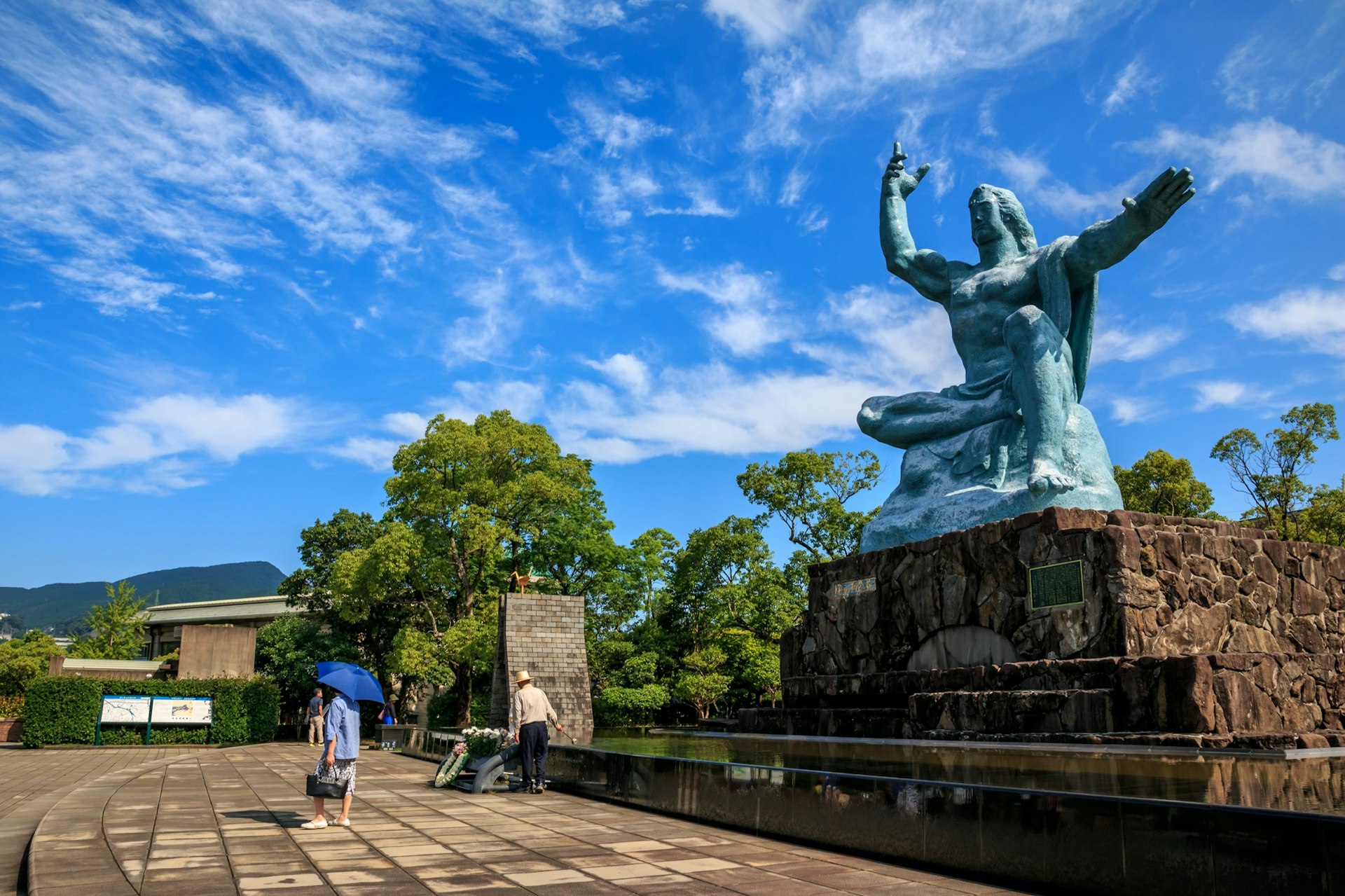
Day 4
Nagasaki’s moving reminders of World War II tragedy
It’s both unfortunate and important that the name Nagasaki is synonymous with the dropping of the second atomic bomb during World War II. The history of the destruction and loss of life stemming from the 9 August 1945 detonation undeniably overshadows everything else in this otherwise vibrant and charming city, with a welcoming and peaceful vibe. The WWII history cannot be overlooked, however, and a visit to the scenes of destruction keep the memory of the victims alive.
Many of these reminders are located in Urakami, a suburb north of the city proper. A trip isn’t complete without paying a visit to the Peace Park located on a small hill north of Ground Zero. The park is presided over by a 10-tonne bronze Nagasaki Peace Statue and includes the dove-shaped Fountain of Peace and a sculpture garden, with pieces from around the world.
The Nagasaki Atomic Bomb Museum is about a six-minute walk from Peace Park. This somber place recounts the city’s destruction and loss of life through photos and artifacts, firsthand accounts and other exhibits. The adjacent National Peace Memorial Hall of the Atomic Bomb Victims is a profoundly moving place, featuring a sculpted water basin and, in the hall below, 12 ‘pillars of light,’ containing shelves of books of the names of the deceased. Interactive exhibits let you listen to survivors’ messages and leave your own digital message for peace.
Get there: Nagasaki is roughly two hours south of Hirado by car, around Ōmura Bay, via the Nishi-Kyushu Expressway, Kyushu Crossing Expressway, and Nagasaki Expressway
Days 5-6
Onsen and kabuki in Yamaga, Kumamoto Prefecture
You could take a 60-minute ferry from Shimabara in Nagasaki Prefecture directly to Kumamoto, but then you would miss the charming and under-the-radar Edo town of Yamaga. The town has long been known for its hot springs, but they are certainly not the only points of interest. Rent a kimono for the day and truly ‘bathe’ in Yamaga’s nostalgic atmosphere.
There are just a few kabuki theaters – featuring elaborate costumes and dynamic acting – left in Japan and Yachiyo-za, established in 1910, is one of them. The theater fell into disrepair over the years and was in danger of being demolished. Fortunately, the refurbished theater opened again in 2001, and in many places the original woodwork of the building has been preserved.
A key element of kabuki theaters is a revolving stage. The stage at Yachiyo-za takes four men to manually rotate from a room below. There are also manually operated lifts that allow actors to appear or disappear on stage for dramatic effect. If it isn’t possible to attend a performance, it may be possible to take a guided tour.
Get there: Yamaga is about 2hrs, 20mins by car from Nagasaki via Kyushu Crossing Expressway / Nagasaki Oita Line and Kyushu Transit Expressway.

Kumamoto Castle
Kumamoto’s Castle, one of the three most famous castles in Japan, is one of Japan’s best, built in 1601-07 and the seat of the powerful Hosokawa clan starting in 1632.
Kumamoto is justly proud of the architectural and historic landmark, around which the city radiates, but it was severely damaged by a major earthquake in 2016. The local government has made it a priority to restore the castle to its former glory, and the second stage of reconstruction is now complete, but for now many portions remain closed. Instead, you can view the castle tower and some outbuildings from Ninomaru Square and Kato Shrine. And a stroll around the castle grounds would be an ideal way to enjoy an afternoon.
There’s a lively and tempting collection of restaurants, bars and shops in the busy arcades east of the castle. And the city’s tourism website has the latest information about site closures.
Get there: Kumamoto is an hour south of Yamaga by car, via National highway No. 3
Day 7
Sengan-en, Kagoshima
Sengan-en, originally constructed in 1658, is the former residence of the Shimazu family of the Satsuma Clan, one of the most powerful feudal clans during the Edo period, and its attached garden, which is part of a larger World Heritage Site.
One of the most striking features of the garden is its views of nearby Sakurajima and Kagoshima Bay. The grounds also include ceremonial gardens, photogenic shrines and symbolic sculptures and rock formations, such as the jumping-lion lantern, arching toward Sakurajima. The garden’s wealth of tropical trees grow exceptionally well in Kagoshima’s balmy microclimate.
Reserve 45 minutes for a leisurely stroll through the garden and 30 minutes for a self-guided tour of the 25-room Goten (‘the house’ on signage), the Shimazu family’s former villa. As sprawling as it is, the villa is now only one-third of its original size.
Get there: Kagoshima is 2hrs, 30min south of Kumamoto by car, via Kyushu Expressway
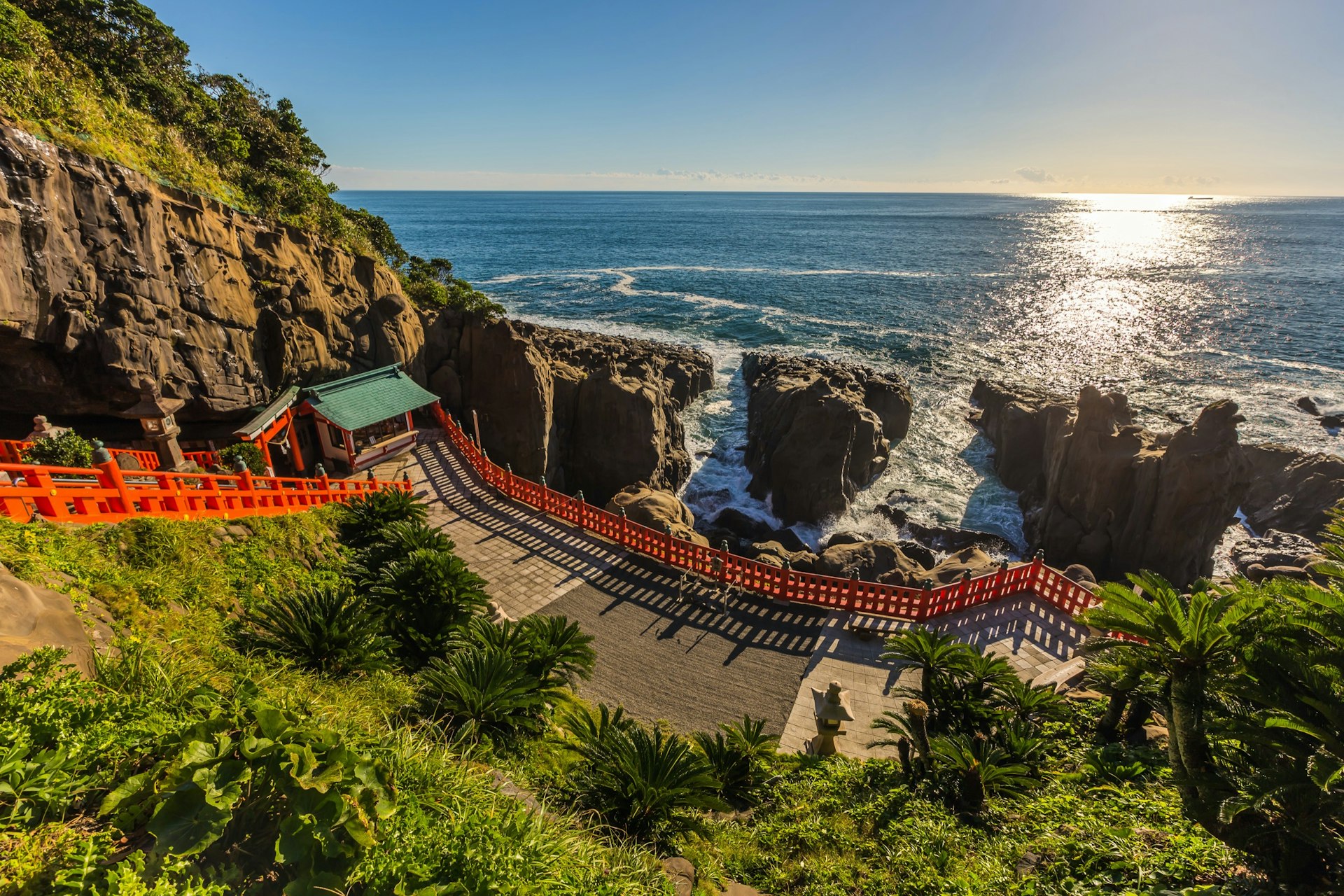
Udo-jingū Shrine, Miyazaki Prefecture
One of your final stops should be where it all began. Udo-jingū, located on the Nichinan Coast south of Miyazaki City, is dedicated to Ugayafukiaezu, the father of the Emperor Jimmu, the mythical first emperor of Japan. This brightly painted shrine, set in a cave on the side of a cliff overlooking the ocean, provides spectacular views and was designated a site of special scenic beauty by the Japanese government in 2017.
Next to the shrine is a terrace overlooking the sea. Among the rocks below is a rope encircling a tiny pool of water. Landing small ceramic undama, or lucky balls (available at the shrine for a small fee), into the tiny pool is said to make wishes come true.
You’ll be glad you have your car, as you’ll want to stop at nearly every corner to take photographs.
Get there: Miyazaki is 2hrs east of Kumamoto by car, via Higashikyushu Expressway / Kagoshima section and Miyazaki Expressway.

Day 8
Back in Beppu, Oita Prefecture
We arrive back where we began, and Beppu is the perfect place to relax away the fatigue of the road. You don’t have to look far to see the reason for this town’s popularity: steam rising from vents in the earth means there are onsen-bathing opportunites galore. With eight onsen districts, aficionados spend their time moving from one bath to another and consider at least three baths a day de rigueur.
Beppu's most-hyped attraction is the jigoku meguri (‘hell circuit’; groups of boiling hot springs), where waters bubble forth from below the ground with unusual results. One of the most picturesque is Umijigoku, which is a steamy blue color due to iron oxide in its 208-degree-fahrenheit water. It’s said to be about 650 feet down to the source. The circuit's eight stops are in two groups: six at Kannawa, more than 2.5 miles northwest of Beppu Station, and two about 1.5 miles further north.
Like the steam around you, Japan’s history has billowed out from the island of Kyushu over centuries of glory and tragedy. Take the time to soak it in and it will sustain you long after you’ve left.
Get there: Beppu is 3 hours north of Miyazaki by car via Higashikyushu Expressway
